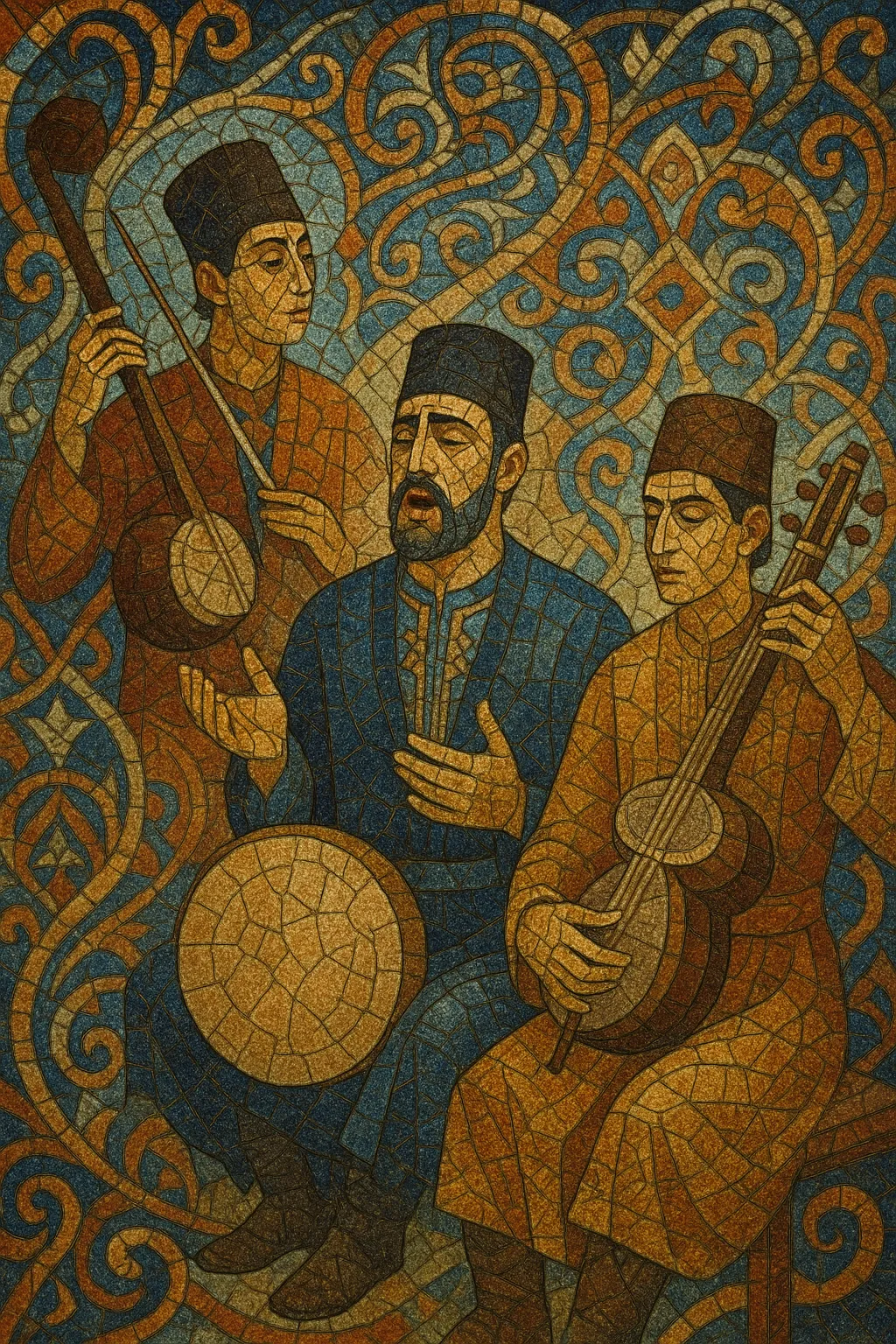Mugham is the classical art music of Azerbaijan, a modal-improvisatory tradition performed by a trio featuring a khananda (vocalist), tar (long‑necked lute), and kamancha (spike fiddle), often supported by a frame drum (ghaval). It combines highly ornamented vocal lines with intricate instrumental responses and cadences.
Built on modal systems (mayeh) such as Shur, Segah, Rast, Chargah, and Bayati‑Shiraz, mugham unfolds as a suite that alternates free‑rhythmic extemporization with metered sections (including composed songs/tesnif and dance‑like reng). Microtonal inflections, melismatic phrasing, and expressive modulations are central to its language.
Poetic texts—frequently ghazals by classical poets like Fuzuli, Nizami, and Nasimi—carry themes of mystical love, longing, and spiritual reflection. In 2008, Azerbaijani mugham was inscribed by UNESCO on the Representative List of the Intangible Cultural Heritage of Humanity.
Azerbaijani mugham crystallized during the 18th–19th centuries in cultural centers such as Shusha, Baku, and Shirvan, drawing on older Near Eastern modal practices shared across Persian, Ottoman, and Central Asian traditions. The Azerbaijani tar—re‑engineered in the 19th century by Sadigjan—became the idiomatic lead instrument, paired with kamancha and the khananda’s voice.
By the late 19th and early 20th centuries, masters like Jabbar Garyagdioglu and Khan Shushinski established widely emulated approaches to modal development (maye), modulation (shobe), cadential returns (forud), and the alternation of free and metered sections (including tesnif and reng). Oral transmission and apprenticeship remained the primary pedagogical pathways.
During the 20th century, mugham entered conservatories and radio, where it was notated, analyzed, and broadcast. Composer Uzeyir Hajibeyli pioneered the fusion of mugham with Western forms (notably the mugham opera "Leyli and Majnun" in 1908), inspiring further cross‑genre experimentation. The period produced renowned performers and helped standardize modal curricula without extinguishing improvisatory practice.
After Azerbaijan’s independence, mugham experienced renewed international visibility through tours, recordings, and collaborations. UNESCO recognized Azerbaijani mugham as Intangible Cultural Heritage (2008), and contemporary virtuosi such as Alim Qasimov and Fargana Qasimova broadened its reach, including projects that intersect with jazz, symphonic writing, and world fusion.
Mugham’s expressive identity lies in its microtonal intonation, melismatic vocalism, and flexible rhythm—moving from rubato meditations to patterned usul cycles. Its repertoire balances inherited modal frameworks with performer‑led invention, sustaining a living classical tradition.


